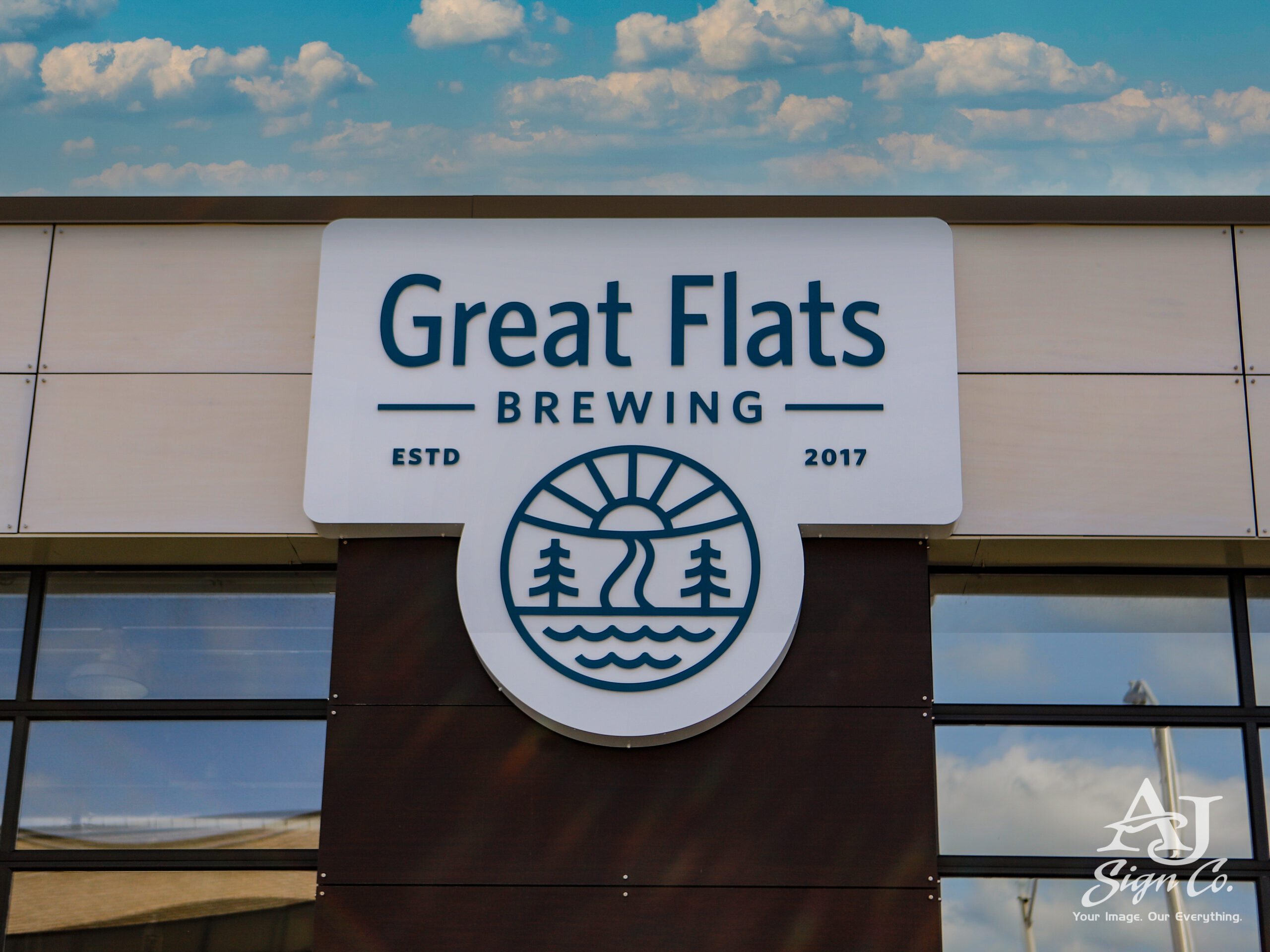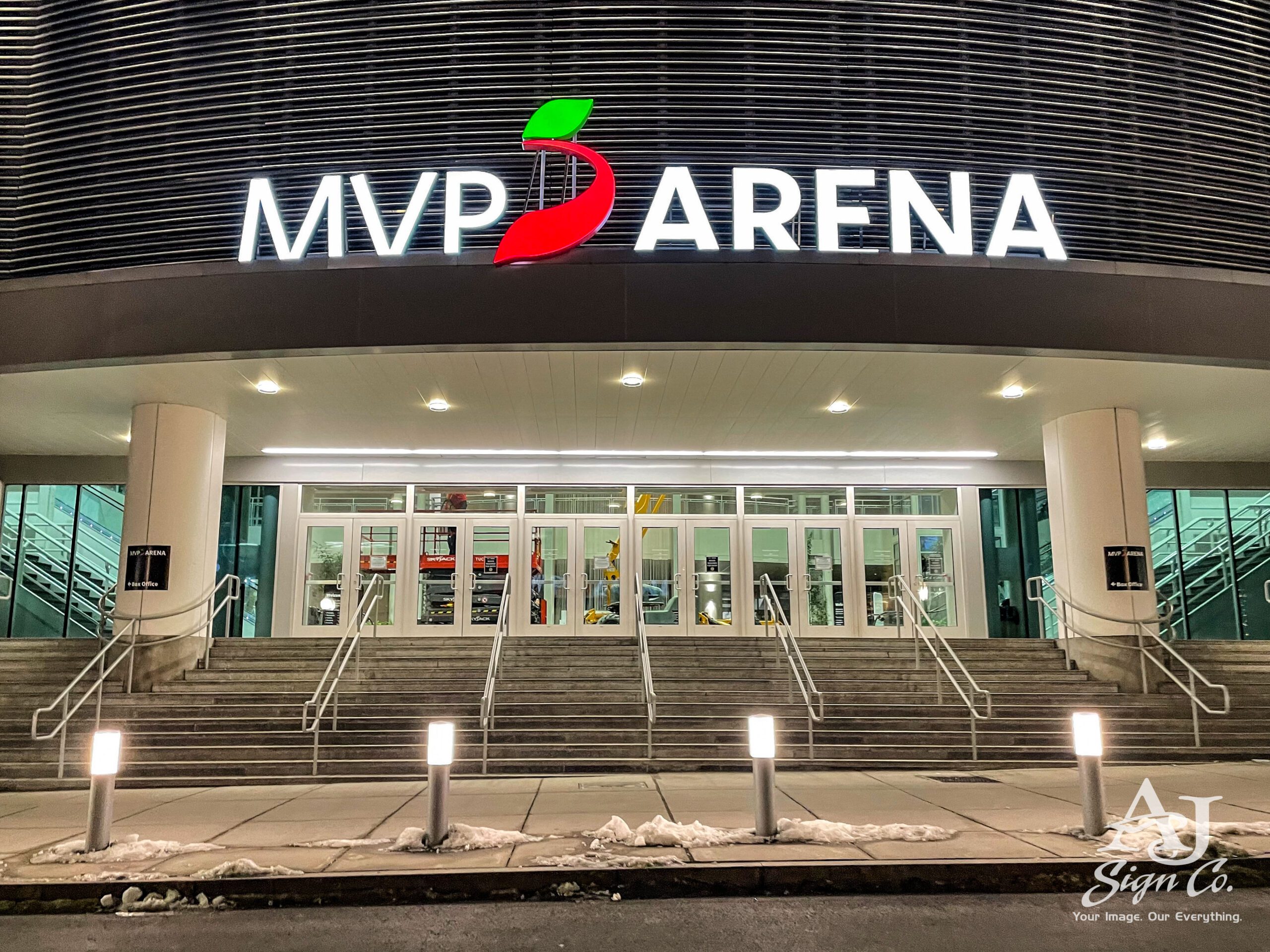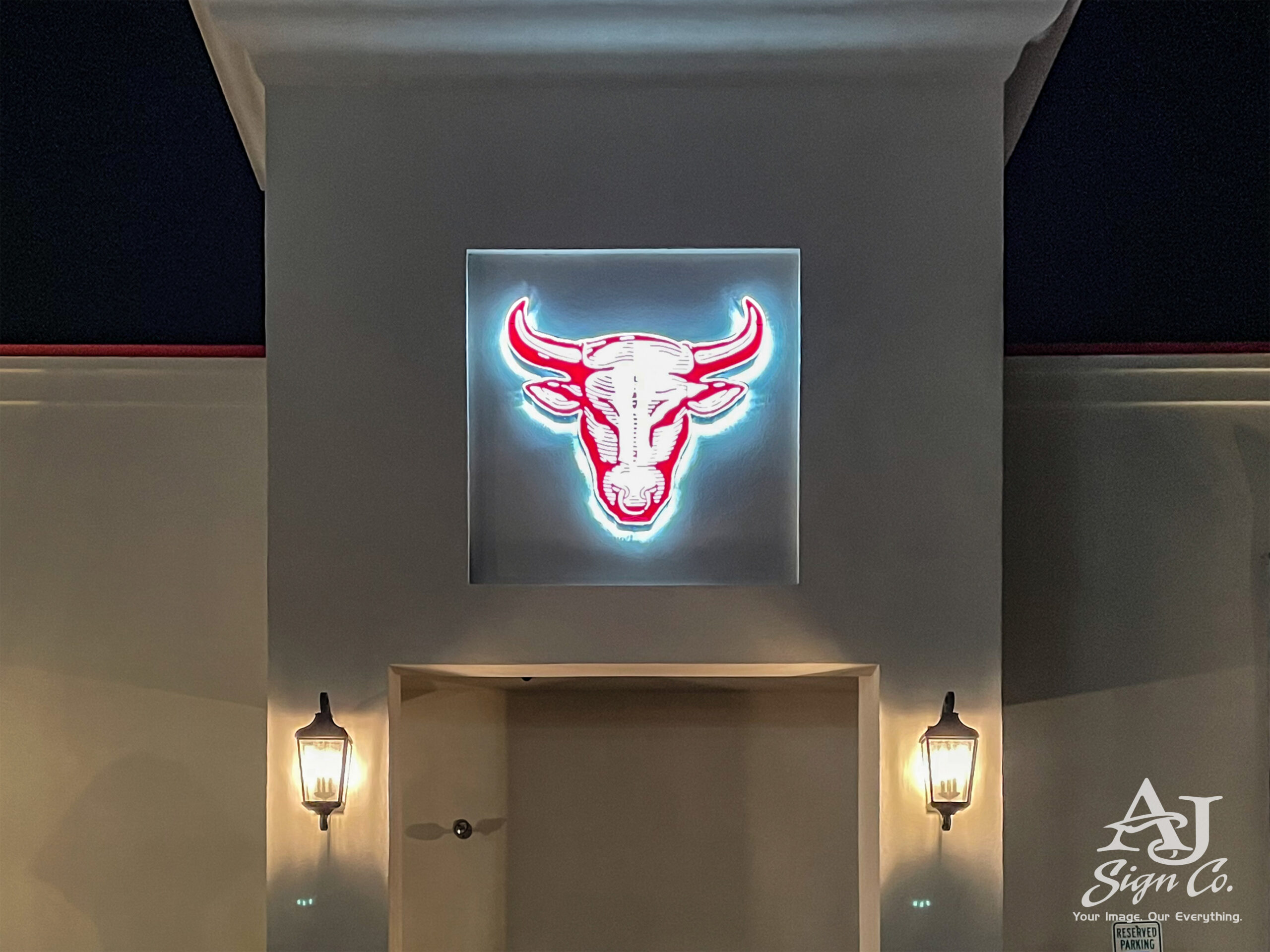Frequently Asked Questions
Whether you’re a first-time customer or a long-time partner, we have compiled a list of the most frequently asked Signs & Graphics questions to help you better understand our products and services. We hope that you find the information in this section helpful and informative. If you don’t find the answer to your question here, please feel free to reach out to us and our Sign Experts will be more than happy to assist you.
Table of Contents
FAQ #1: What will my new sign look like at night?
Having a well-designed sign is crucial to the success of your business. It’s not only important to have a sign that looks good during the day, but it’s also essential to have a sign that stands out and attracts attention at night. After all, most people are more likely to notice your sign when it’s dark outside, and a sign that is well lit and eye-catching is more likely to attract potential customers. We’ll break down some of our most popular sign types and explain how they look at night:
Internally Lit vs Externally Lit Signs
An internally lit sign, also known as an illuminated sign, will be easily visible at night due to its bright and eye-catching appearance. The sign will be made up of materials that are designed to evenly distribute light, such as translucent or opaque acrylic. The light source will be located within the sign, which will create a glowing effect that makes the letters or symbols on the sign appear to be lit from within. Depending on the design, the light source may be a series of LED lights, fluorescent lights, or neon lights. Overall, an internally lit sign will be a highly effective way to draw attention to a business or location at night. An externally lit sign will typically feature some form of external lighting. Depending on the design, the lighting is usually provided by external lighting fixtures aimed at the sign. The lighting will be positioned to illuminate the sign face, making the text, logo or graphics on the sign visible in low-light or dark conditions. The color of the lighting used will depend on the intended effect of the sign, but it is common for signs to use bright, contrasting colors to make them stand out in the dark. An externally lit sign should be easily visible and legible in low-light conditions, drawing the attention of passersby and helping to attract customers to the business.
Digital LED Display Signs
Digital LED Display Signs are one of the most popular types of signs today, and for good reason. Digital Signs are energy efficient, bright, and can be seen from a distance, making them ideal for businesses that want to attract attention at night. Digital LED Display Signs comprise of panels of individual LED lights, which are highly customizable, and can be programmed to display different messages, graphics, and animations.
At night, LED Display Signs are particularly effective, as they can be seen from a distance and are eye-catching. If you’re looking for a sign that will help your business stand out and attract customers with customizable content, Digital Signs might be the perfect choice for you.


Push Through Letter Signs
Push Through Letter Signs are a popular type of signage that provides a professional and modern look to any storefront or building. These signs feature individual letters that are pushed through the sign face for a three-dimensional effect. At night, these signs can be illuminated with LED lights that shine through the letters, creating a vibrant and eye-catching display. The letters themselves will appear to glow against the dark backdrop of the night, providing excellent visibility for businesses and making them stand out to potential customers.


Channel Letters
Channel Letters are a popular type of sign made up of individual illuminated letters. These signs are highly customizable, and can be made in a variety of shapes and sizes. There are three main types of Channel Letters, each giving a different effect at night:
1) Face-Lit Channel Letters
Also known as Traditional Channel Letters, these signs are typically made from durable and weather-resistant materials, such as aluminum and acrylic, and the lighting is achieved through the use of LED lights positioned inside the letters. The LEDs can be programmed to produce a range of colors, allowing businesses to create a customized and visually stunning display that can be seen from afar.


2) Reverse-Lit Channel Letters
Also known as Halo-Lit Letters, these signs are typically made of painted or brushed metal, and feature a clear back. Instead of being internally face-lit like traditional Channel Letters, Reverse-Lit Channel Letters are illuminated from behind, casting a soft and subtle glow around the perimeter of each letter. The effect is striking and eye-catching, giving the letters a halo-like appearance that stands out in the dark.


3) Face & Reverse Lit Combination Channel Letters
Combination Channel Letters combine both lighting aspects of the above types into one. The front face of the letters will be illuminated, typically with LEDs, providing a bright and vibrant display of the business name or logo. The back of the letters will also be lit, creating a halo glow effect that adds depth and dimension to the sign. The combination of front and back lighting creates a striking contrast, making the sign easily readable and highly visible even in dimly lit surroundings. The overall effect is a sleek and modern look that attracts attention and effectively communicates the business’s brand and message to potential customers.


FAQ #2: What is a vector file?
A vector file is a type of digital image file that is created using mathematical algorithms, rather than pixels. This makes vector files scalable, meaning they can be increased or decreased in size without losing their quality or clarity. This feature makes them ideal for use in signs and graphics, as they can be resized to fit any size or shape without becoming blurry or distorted. In this FAQ, we will take a closer look at what vector files are, how they are created, and how they are used at AJ Signs.
Why are vector files better for signs and graphics?
- Scalability: Vector files can be scaled up or down without losing image quality. This is because the image is created using mathematical equations, rather than pixels, which can become blurry or pixelated when resized. Vector files ideal for creating large-format signs and graphics, such as sign faces or vehicle wraps.
- Precision: Vector files allow for precise control over lines and curves, which is important in creating intricate designs and logos. This is particularly useful for creating signs and graphics that require a high level of detail, such as custom lettering or intricate patterns.
- Versatility: Vector files can be easily edited and manipulated, which makes them versatile for different types of signs and graphics. For example, vector files can be used to create vinyl lettering for a storefront, as well as an acrylic tenant panel on a monument sign.
- Professionalism: Using vector files ensures that the final product is of high quality and looks professional. This is important for businesses and organizations that want to create a strong brand identity and make a positive impression on customers.
I don’t have Vector files of my artwork, can it be converted?
Sometimes depending on how detailed your logo or artwork is, our designers can recreate the image by vectorizing or converting it to a vector format. However, not all artwork can be easily vectorized. Simple logos with clear lines and basic shapes are usually the easiest to convert into vector graphics, as the process involves tracing and recreating each element in the design using vector paths. This allows the designer to manipulate the design without losing quality or sharpness.
On the other hand, more complex designs, such as photographs, images with a lot of shading, or designs with intricate details, may be more difficult to vectorize. In some cases, it may be impossible to recreate the same level of detail as the original raster image, and the resulting vector image may appear simplified or flattened.
I have a PDF file, will it work for my sign or graphics project?
While PDF files can be created in either vector or raster format, not all PDF files are created equally. Sometimes, the images or design elements in a PDF file can be raster format, even if the text is in vector format. This can cause issues when the PDF is used in sign and graphic applications, where high-quality output is required.
or example, if a PDF file containing a logo is made up of raster graphics, it may not look crisp and clear when printed on a large banner or sign. This is because the individual pixels in the raster image become more visible when the image is enlarged, which can result in a blurry or pixelated appearance.
In Conclusion
In summary, vector files are a crucial component in creating high-quality signs and graphics. They allow for scalability, precision, versatility, and professionalism, which are all important in creating an effective and visually appealing design.
FAQ #3: How do I make my vehicle graphics last longer?
Congratulations on getting new vehicle graphics from AJ Signs! Here are some tips on how to care for them so they can continue to look great for years to come:
- Avoid Extreme Temperatures: Avoid exposing your vehicle graphics to constant extreme temperatures, such as direct sunlight or extreme cold. Vehicles with graphics last much longer when stored in the shade or garage.
- Wait before washing: Avoid washing your vehicle for at least 48 hours after the installation of the graphics. This will give the adhesive time to cure and adhere to the vehicle’s surface.
- Hand-washing is best: When you’re ready to wash your vehicle, use a soft sponge or cloth and a gentle, non-abrasive soap. Avoid using any harsh chemicals or abrasives, as they can damage the vinyl material.
- Keep your vehicle clean: Regularly clean your vehicle to keep dirt and debris from accumulating on the graphics. This can help prevent scratches and other damage from unnecessary build up of grime.
- Avoid car washes with brushes: Automated car washes that use brushes can damage the vinyl graphics on your vehicle. If you have to use a car wash make sure it’s a touchless one to avoid abrasive brushes causing issues with your vinyl.
- Don’t use wipers on perforated window vinyl: Using your rear wipers on a car with perforated window vinyl can potentially cause damage to the graphics. The movement of the wiper blades can catch on the perforations and tear or stretch the vinyl, leading to unsightly damage.
- Try not to lower windows with perforated vinyl: It is generally recommended to avoid lowering windows perforated vinyl graphics. For the same reason as windshield wipers, your graphics can get caught and start to stretch or tear.
FAQ #4: What is my sign process?
Signs are a crucial aspect of any business or organization. They communicate important information to customers and visitors, including directions, branding, and promotions. However, the process of creating and installing a sign can be complex and involves several steps.
Let’s break down the sign process into five key steps: Design, Permit, Build, Install, and Maintain.
- Design: The first step in the sign process is to create a design that effectively communicates your message and meets any legal requirements or branding guidelines. This could involve working with a graphic designer or sign company to create a mock-up of the sign. It’s important to consider factors such as visibility, readability, and size, as well as any regulations related to the location, height, and lighting of the sign.
- Permit: Before we can install your sign, you’ll typically need to obtain a permit from your local government or zoning board. The specific requirements for obtaining a permit will vary depending on your location, but may include submitting a design plan, paying a fee, and meeting certain specifications related to safety and aesthetics. Our team of experts will lead your project through the often overwhelming permit process. We will attend municipal meetings on your behalf, and obtain the required permits for your new sign.
- Build: Once we’ve obtained the necessary permits, it’s time to build your sign. Combining modern technology with traditional techniques, our Master Fabricators bring a unique blend of precision and artistry to every sign they craft. With an unwavering commitment to excellence, they meticulously handcraft every detail to ensure that our customers receive a truly exceptional product that surpasses their expectations.
- Install: We have crews of expert Installers, all with OSHA safety training to ensure a safe and efficient installation. Utilizing our top-of-the-line equipment and fleet of installation vehicles, our goal is to make sure that your project is long lasting and durable. We regularly conduct quality control checks throughout the installation process to guarantee that our high standards are met and that you receive the best possible service.
- Maintain: Keeping your sign looking new is everything for your brand image. Whether your sign was built by us or others, our service fleet is always ready to respond to your needs. Even after a sign has been installed, it’s important to maintain it to ensure it remains visible and functional. Our team of highly skilled Sign Experts provide quick and efficient maintenance services to keep your sign in top shape.
FAQ #5: Can I use hex code colors for signs & graphics?
Hex code colors are a widely used digital color system that uses a combination of six letters and numbers to define a specific color. While hex code colors are essential for creating a cohesive digital presence, they have significant limitations when it comes to designing physical signs and graphics:
- The first limitation of hex code colors is that they do not take into account how colors appear in different lighting conditions. Natural light, artificial light, and even the time of day can significantly impact how colors appear. This can be a problem when designing signs and graphics that will be viewed in various lighting conditions.
- Secondly, hex code colors do not account for differences in the way that colors are printed. Colors may look different when printed on different materials, such as vinyl or paper, or when printed using different printing methods. This can lead to significant discrepancies between the digital design and the final printed product.
- Lastly, hex code colors are not suitable for paint mixing in signs and graphics. This is because they are based on RGB values, which are created using light, whereas pigments used in paint have different properties and can produce unexpected results. Physical color samples and paint swatches should be used for accurate color matching.
The Importance of Color Matching
To overcome the limitations of hex code colors when designing signs and graphics, it is essential to focus on color matching. Color matching involves creating a physical color reference that can be used to ensure that colors appear consistent across various media.
One way to achieve color matching is to use a Pantone Matching System (PMS). PMS is a color-matching system used in the printing industry to ensure that colors appear consistent across various printed materials. By using a PMS, you can create a physical color reference that can be used to ensure that your designs look the same both online and in the real world.
Another way to achieve color matching is to use physical color samples. Physical color samples can be used to compare and match colors across various media, ensuring that your designs look consistent across all platforms.
The Benefits of Professional Design Services
Designing effective signs and graphics requires a deep understanding of color theory, typography, and graphic design principles. While it is possible to design signs and graphics independently, working with the professional Graphic Design Experts at AJ Signs can ensure that your designs are effective and consistent. The AJ Signs team can provide expertise in color matching, typography, and graphic design principles, ensuring that your signs and graphics look the way you want them to. Email us at design@ajsigns.com to get your next project started today!

